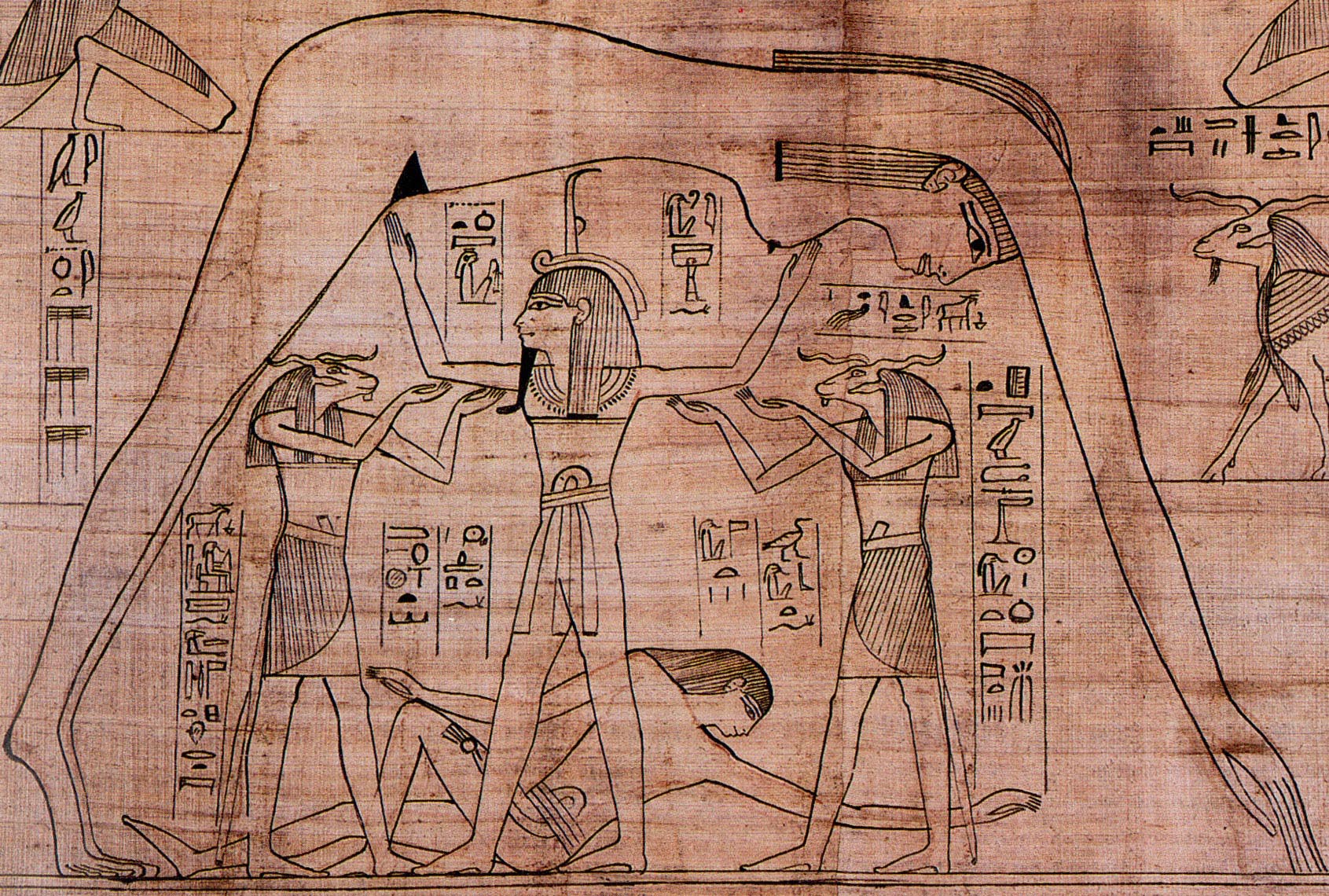Geb
Geb was the Egyptian god of the earth and a member of the Ennead of Heliopolis. He could also be considered a father of snakes. It was believed in ancient Egypt that Geb's laughter created earthquakes and that he allowed crops to grow.
Role
The oldest representation of Geb dates to the 3rd Dynasty on a fragmentary relief of the god as an anthropomorphic bearded being accompanied by his name found in Heliopolis. However, Geb never received a temple of his own. In later times he could also be depicted as a ram, a bull or a crocodile.
Geb was frequently feared as father of snakes (one of the names for snake was s3-t3 – "son of the earth"). In a Coffin Texts spell, Geb was described as father of the mythological snake Nehebkau of primeval times. Geb also often occurs as a primeval divine king of Egypt from whom his son Osiris and his grandson Horus inherited the land after many conflicts with the disruptive god Set, brother and killer of Osiris.
Geb could also be regarded as personified fertile earth and barren desert, the latter containing the dead or setting them free from their tombs, metaphorically described as "Geb opening his jaws," or imprisoning those there not worthy to go to the fertile North-Eastern heavenly Field of Reeds.
In the Heliopolitan Ennead (a group of nine gods created in the beginning by the one god Atum or Ra), Geb is the husband of Nut, the sky or visible daytime and nightly firmament, the son of the earlier primordial elements Tefnut and Shu, and the father to the four lesser gods of the system – Osiris, Seth, Isis and Nephthys. In this context, Geb was believed to have originally been engaged with Nut and had to be separated from her by Shu, god of the air. Consequently, in mythological depictions, Geb was shown as a man reclining, sometimes with his phallus still pointed towards Nut. Geb and Nut together formed the permanent boundary between the primeval waters and the newly created world.
As time progressed, the deity became more associated with the habitable land of Egypt and also as one of its early rulers. As a chthonic deity he (like Min) became naturally associated with the underworld, fresh waters and with vegetation – barley being said to grow upon his ribs – and was depicted with plants and other green patches on his body.
His association with vegetation, healing and sometimes with the underworld and royalty brought Geb the occasional interpretation that he was the husband of Renenutet, a minor goddess of the harvest and also mythological caretaker (the meaning of her name is "nursing snake") of the young king in the shape of a cobra, who herself could also be regarded as the mother of Nehebkau, a primeval snake god associated with the underworld. He is also equated by classical authors as the Greek Titan Cronus.
The story of how Shu, Geb, and Nut were separated in order to create the cosmos can be interpreted in more human terms; exposing the hostility and sexual jealousy. Between the father-son jealousy and Shu rebelling against the divine order, Geb challenges Shu's leadership. Geb takes Shu's wife, Tefnut, as his chief queen, separating Shu from his sister-wife. Just as Shu had previously done to him. In the book of the Heavenly Cow, it is implied that Geb is the heir of the departing sun god. After Geb passed on the throne to Osiris, his son, he then took on a role of a judge in the Divine Tribunal of the gods.
Syncretization with Cronos
In Greco-Roman Egypt, Geb was equated with the Greek god Cronus, because he held a similar position in the Greek pantheon, as Geb did in Egyptian mythology. This equation is particularly well attested in Tebtunis in the southern Fayyum: Geb and Cronus were here part of a local version of the cult of Sobek, the crocodile god.
The equation was shown on the one hand in the local iconography of the gods, in which Geb was depicted as a man with attributes of Cronus and Cronus with attributes of Geb. On the other hand, the priests of the local main temple identified themselves in Egyptian texts as priests of "Soknebtunis-Geb," but in Greek texts as priests of "Soknebtunis-Cronus." Accordingly, Egyptian names formed with the name of the god Geb were just as popular among local villagers as Greek names derived from Cronus, especially the name "Kronion."
